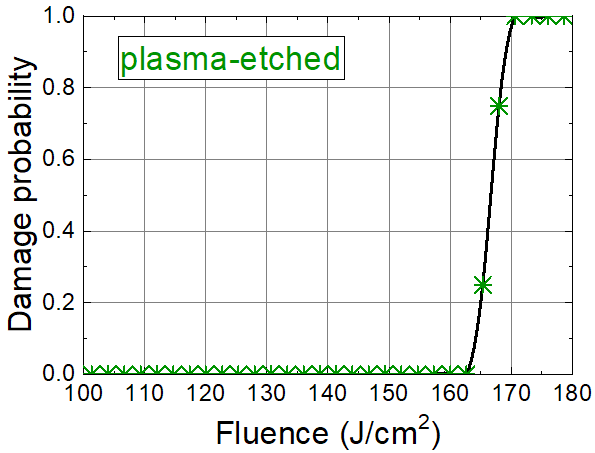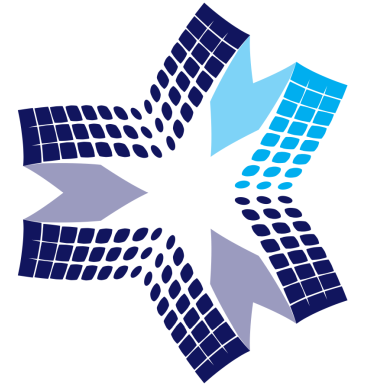PLASMA ETCHING OF POLISHED GLASS AND CRYSTAL SUBSTRATES FOR PREPARING HIGH POWER LASER COMPONENTS


DESCRIPTION, INNOVATION AND ADVANTAGES
Our plasma etching technology targets the essential improvement of polished optical substrates (glasses, crystals) in order to increase their laser damage resistance and produce coated transparent optical components for high power laser applications.
The subsurface of polished substrates very often contains the so-called Beilby layer, contaminated with polishing residuals. This sub-layer effectively absorbs laser radiation (especially in UV spectral range) and becomes the weakest link of laser component coated with antireflection (AR) or any other type of transmitting dielectric coating (beam splitter, polarizer, etc.).
Developed low-energy plasma etching allows effective removal of this contaminated substrate subsurface layer. Extensive studies demonstrated an increase of fused silica (FS) substrate laser-induced damage threshold (LIDT) from initial 20 J/cm2 up to 100-150 J/cm2 (355 nm, 2 ns duration laser pulse, test 1-on-1) after plasma etching. Another advantage is that initial substrate surface roughness is maintained after the etching procedure. Plasma etched and coated with AR coating FS substrate demonstrated the increase of 3.4x of LIDT for 355nm laser pulse compared with unprocessed and simultaneously coated FS substrate. Developed technology was also further applied for the etching of various non-linear and laser crystals, such as spinel (MgAl2O4), BSO, YAG. A significant (at least 2-3 times) increase of their LIDT in the near-infrared spectral range was obtained. Several successful collaborations with industrial partners were executed.
CURRENT STAGE OF DEVELOPMENT
Prototype available for demonstration
INTELLECTUAL PROPERTIES RIGHTS STATUS
In-house know-how.
TYPE AND ROLE OF PARTNER SOUGHT
Industrial and (or) research institutions.
Value proposition
Our plasma etching technology significantly enhances the laser damage resistance of polished optical substrates, enabling the production of high-power laser components. By effectively removing the Beilby layer, we not only maintain the initial surface roughness but also increase the laser-induced damage threshold (LIDT) by up to 2-7 times, paving the way for more resilient and efficient optical systems.

